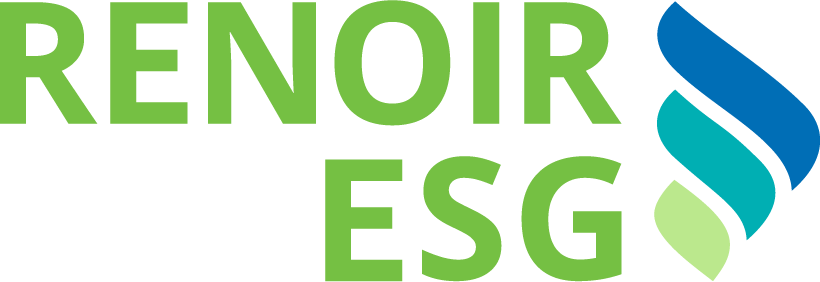It’s a generally-accepted myth that today’s employees, especially millennials, are more apt to job hop with the aim of accelerating their way up the pay scale and seniority ladder. The evidence, however, does not support this myth, and in fact, shows the opposite trend over the last few decades.
According to the US Bureau of Labor Statistics, there has been a steady increase in median tenure with current employer over the past three decades. Despite two recessions, it increased from 3.5 years in 1983 to 4.6 years in 201
The trend holds true even if we segment the data according to age and education level. The overwhelming takeaway is that employees want to stay with a company long-term.
On the face of it, this seems like encouraging news. After all, it’s widely accepted that it’s much more expensive to recruit and train up a new employee than to retain an existing one.
However, might there also be negatives lurking within this windfall? Here’s an example from a recent project to illustrate the point.
Uncovering the issue
An oil and gas engineering company in Tulsa, Oklahoma, invited us in to help them tackle a pressing issue. They regularly install machinery that will be in place for the duration of a service contract of up to five years. However their latest model was suffering from a troubling defect that resulted in detrimental reductions in performance.
The lead engineer revealed that the problem came to light soon after the model’s release, however all their attempts to resolve the issue had been unsuccessful. Their most recent attempt, which cost $500,000 per unit, had worked initially in testing, which prompted them to roll out the solution to every unit. However, after a few months, the defect reappeared throughout the fleet.
This represented a real risk to the organization. Customers and contractors would soon realize this was a systemic issue affecting all the units of this model, and that could potentially destroy their reputation.
We immediately jumped at the opportunity to help. Now obviously we weren’t there to provide an engineering solution, but we could analyze the history of the company’s attempts to find a solution to see whether that might reveal a more fundamental issue. Our hope was that tackling that could help them solve this problem and many others.
We started by mapping out the history of the defect, to understand not only the timeline of events but how decisions were reached and implemented. We then performed similar mappings in other departments to determine if our findings were department specific or applied across the organization.
To understand the results of our analysis, you’ll need some more background information on the company.
For many of the employees, this was the only company they had ever worked for. Many of those based at headquarters had spent years working in the field before being promoted to office-based roles. Junior executives had typically been with the company for 10-15 years. Senior executives had often been there for 20-35 years. They would frequently stop to chat with less experienced employees and share stories from their time in the field. The level of respect they garnered was impressive.
Managers burdened with high staff turnover might read this and wonder how this wealth of experience could be a negative. After all, companies have spent billions of dollars on efforts to improve retention. However, as we discovered in this case, the long tenure of senior staff can have an unfortunate impact on decision making. In this instance, the reverence less-experienced employees showed the senior executives permeated into the decision-making hierarchy. It isn’t enough to say that experience merely trumped expertise and proximity to the problem. The latter two didn’t even have seats at the table.
Each of the five solutions proposed to fix the defect followed the same path. News of the failures reached senior management through a variety of informal sources by way of telephone conversations, email and instant messenger. No official reporting took place to make sure all the senior executives were presented with the same facts to take into consideration.
The discussion of the issue took place at the weekly executive leadership meetings and was based on anecdotal stories and personal experience, with no supporting data to facilitate root cause analysis. The meetings also lacked input from field-based employees who saw the failures on a daily basis.
In one of the first meetings, one senior executive commented that he had seen the same thing when he was in the field, and they had solved the problem by simply changing the angle of the fan. Without a decision-making framework, the committee was swayed by the senior executive’s confidence and level of experience. Unsurprisingly, their first proposed solution was to change the angle of the fan.
Finding the right way
We suggested taking a ground-up approach to problem solving. Rather than placing the burden squarely on senior executives, field-based employees would be empowered with tools to help them identify issues, provide root cause analysis and recommend possible solutions to the executive leadership team (ELT). The entire process would be supervised by the ELT.
In the future, for a specific issue to receive consideration, ELT members would need to approve a specific charter. A small cross-functional team of employees would then use the appropriate tools from the Renoir toolkit to address the issue.
To make this approach work, team members would need to be trained in how to use the toolkit. So we implemented a training program called Change Champions. Interactive training took place over 13 weeks and followed the DMAIC (define, measure, analyze, improve, control) approach.
Topics included:
• Six Sigma
• The importance of defining problems
• How to brainstorm effectively
• Social behavior
• Data analysis
• Statistics
• Overcoming resistance
• Process mapping
• Team development
• Root cause analysis.
We proposed that coming up with a final recommendation for each charter should take two to four weeks. However, when assigned to a charter, Change Champions could expect to devote as much as 50% of their time to the project. Managers were made aware of this, so they could plan and make the necessary adjustments. The manpower commitment was undoubtedly large, but the payoff was incalculable.
Although they had responded well to the training program, the Change Champions had reservations about whether senior management would take their recommendations seriously. The previous culture was so ingrained in them that they were doubtful of their ability to contribute to the organization’s decision making in such a direct way.
The pilot charter identified weaknesses in the accounts receivable collection process. The Change Champions suggested a review of the entire process to minimize the number of incoming payments exceeding 90 days.
They had successfully mapped out the “as-is” accounts receivable process and noted critiques from various departments. They then laid out three options for alternative processes, listed the pros and cons of each and came up with a final recommendation out of those three.
Everything had gone well, but still one of the team members voiced her doubts, asking, ‘What’s the use? They are just going to do whatever they want anyway.’
This was a recurring theme throughout the entire program and seemed to be pervasive throughout the organization. From a consultant’s perspective, it was variation on a familiar theme. We typically hear ‘We’ve tried this before’ or ‘I brought this up once before and they didn’t listen.’ I responded as I always do: ‘I know, but just trust our process.’
When it came to the final recommendation for the pilot charter, the team did a tremendous job in reviewing the entire journey they had taken to get there. They summarized the original issue uncovered by the Renoir team, the as-is process map, the critiques of the process from multiple departments, the three to-be processes they considered and how they concluded that their recommendation was the best path. They also outlined a rollout timeline, communication plan and mitigation plan to address specific risks.
The ELT was taken aback at the level of analysis completed in less than four weeks. After asking a few questions, they unanimously approved the recommendation and elevated one of the non-manager team members to lead the rollout.
Rolling out the new approach
News of the success of the pilot charter quickly travelled among other staff and it didn’t take long for charter requests to come pouring in. The field staff realized they could directly impact the organization and this did more to energize them than any monetary benefit ever could.
After a few months, the company realized they needed more Change Champions. We provided three additional training programs, one tailored specifically to managers. This lessened the burden on department managers, who couldn’t afford to have their staff working on back-to-back charters.
The Change Champions were now fixing some of the biggest problems the company faced, including the original engineering defect that had prompted them to contact us in the first place. Within five weeks the team had completed a report that identified several root causes for the underlying defect. They compiled a list of mitigations that could be carried out immediately at minimal expense, which would drastically reduce the chances of the defect occurring in future.
The benefits of the Change Champion program were far-reaching. The Change Champions felt they had a much better understanding of other departments’ workflows, and that enabled them to perform more effectively in their everyday roles. One of the biggest impacts was that the Change Champions freed up the executive leadership team to think strategically about the business rather than spending their time fire-fighting problems.
We had taken one of the company’s biggest assets, the long tenure of its workforce, and leveraged it to support continuous improvement from the bottom up.












